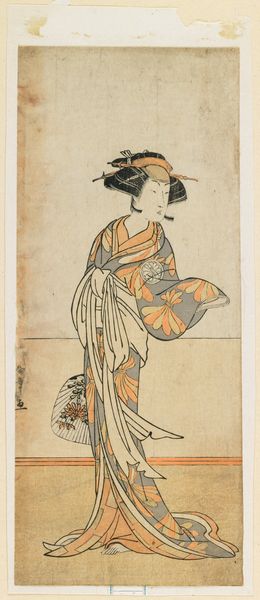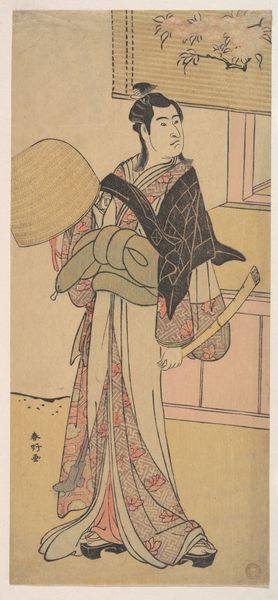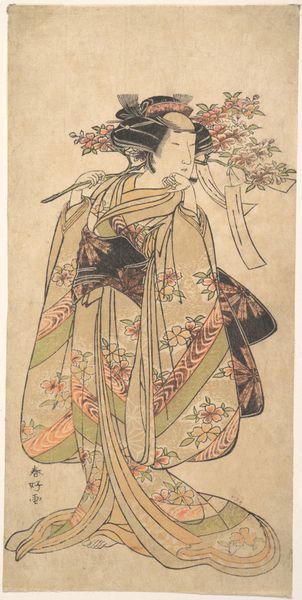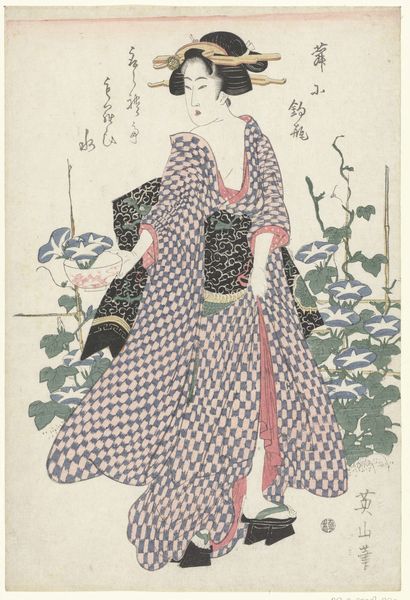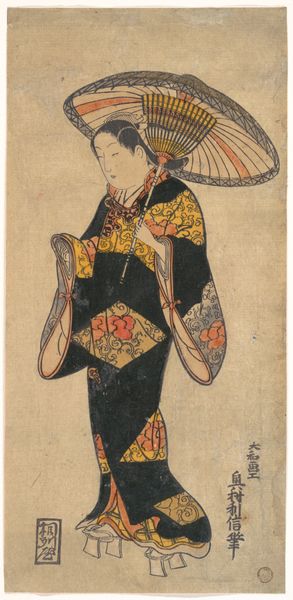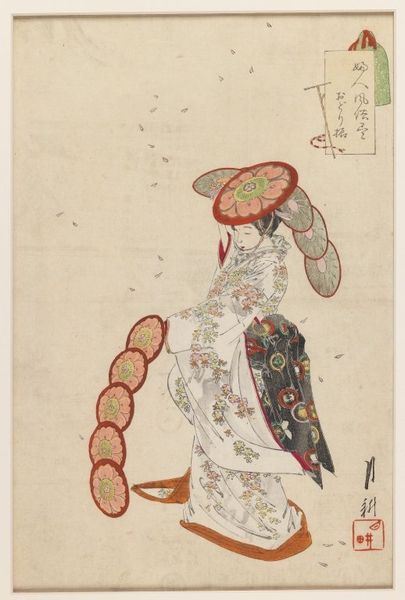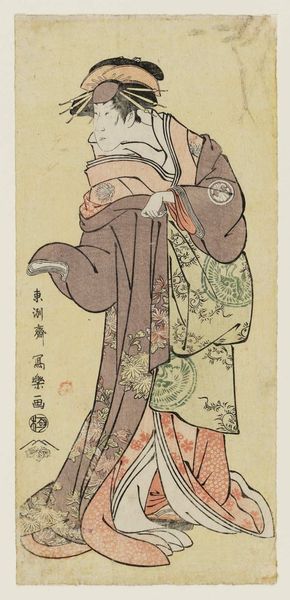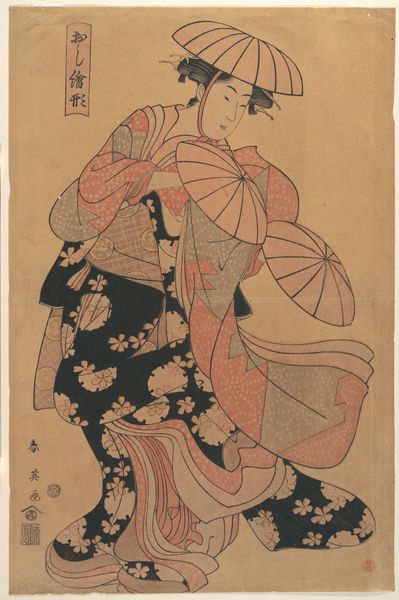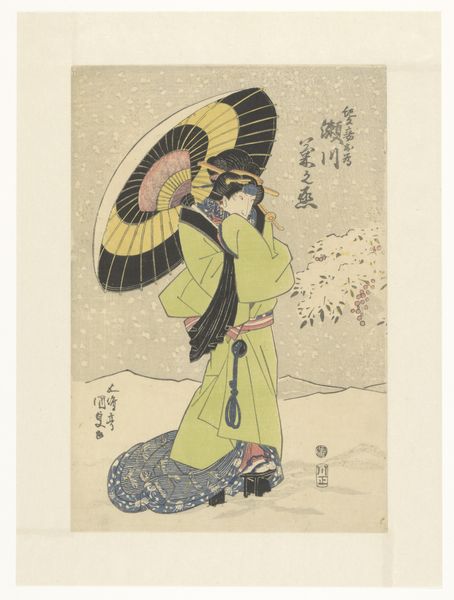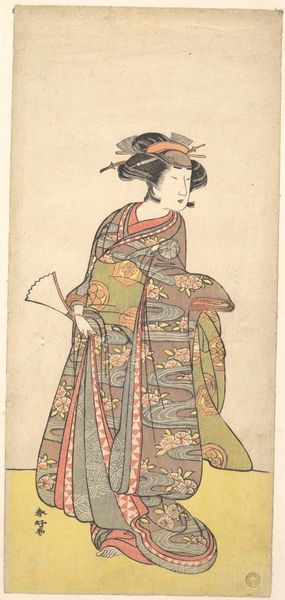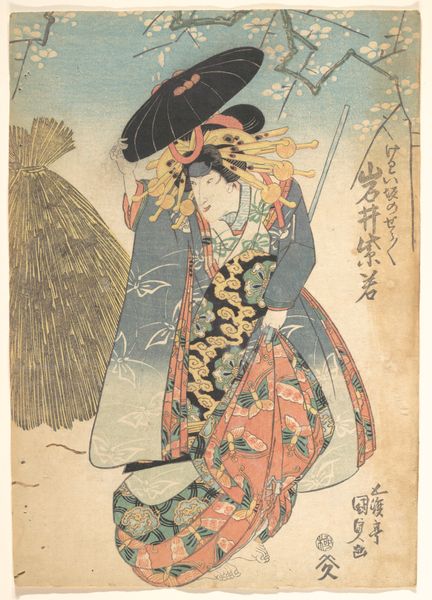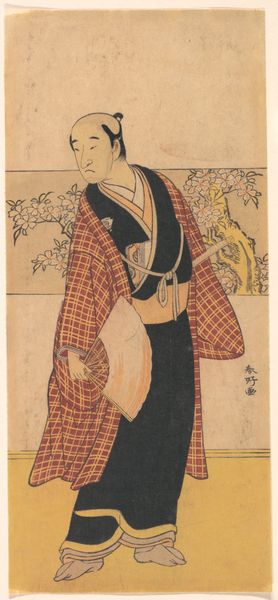
print, woodblock-print
#
portrait
# print
#
asian-art
#
landscape
#
ukiyo-e
#
figuration
#
woodblock-print
Dimensions: height 383 mm, width 172 mm
Copyright: Rijks Museum: Open Domain
Curator: Before us is “Ono no Tofu and the Frog”, a woodblock print made around 1758 by Torii Kiyohiro. It presents a poised figure under a willow tree. Editor: It’s subdued in color, almost melancholic, really. There's an intriguing stillness despite the suggested narrative elements. The intricate patterns on the kimono offset against the minimal rendering of the background...I'm immediately drawn to this apparent disjunction. Curator: Let’s delve into that stillness. We have Ono no Tofu, a calligrapher and courtier, looking down pensively. His elegant robes and posture demonstrate masterful printmaking, especially when you consider the texture of the paper used in ukiyo-e traditions. Editor: But his apparent defeat or struggle, in sharp contrast with his aristocratic status, adds layers. See how the small frog leaps repeatedly towards the willow? It symbolizes perseverance against adversity. We can consider the commentary this provides about societal expectations and the nature of success. The narrative hints that this celebrated calligrapher and politician failed again and again at reaching his goals before mastering the techniques he later became known for. Curator: Precisely! The diagonal composition—from the willow’s drooping branches to the deliberate angle of the figure and his umbrella—adds visual tension, doesn't it? Then look how the geometric forms contrast with the freeform lines. The artist's attention to line is central. Editor: Agreed. But viewing it through the lens of social mobility at that time heightens the emotional impact. Ono no Tofu wasn't born into privilege. We're confronted by a question that I imagine persists today: how do we navigate failure in our paths? Does this represent the emotional realities, class barriers, and unspoken prejudices for people of that period? I see the amphibian there more than an amusing anecdote. Curator: Well, it can certainly be viewed as an enduring reflection on inner struggle and triumph over visible structural restraints, but the immediate formal element on my mind is certainly Kiyohiro’s balance and restraint, which adds to the work's sophistication. Editor: It's a reminder that appearances can be deceptive. We are reminded that every polished performance—even that of a respected leader and intellectual—comes from constant internal struggles to master something or reach beyond expectations. Curator: This viewing certainly brings new nuances to my appreciation for the art's visual simplicity, offering a balance of detail. Editor: And for me, a clearer sense of our constant negotiation with the barriers—self-imposed or externally defined—around success and perseverance in our social existence.
Comments
rijksmuseum about 2 years ago
⋮
Brooding about whether to give up his career as a court calligrapher, Ono no Tofu sees a frog trying to jump onto a willow branch. After many failed attempts, the frog finally succeeds. This perseverance inspires the later very famous calligrapher to never to give up. This early two-colour print in pink and green dates from just before the invention of the multi-colour print in Japan.
Join the conversation
Join millions of artists and users on Artera today and experience the ultimate creative platform.
